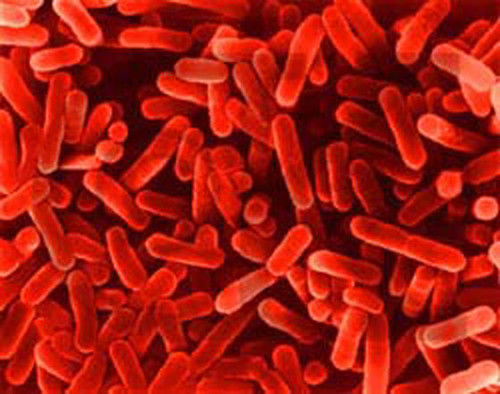tags: microbiology, astrobiology, new species, Indian Space Research Organization, bacteria
According to a recently published press release, three new species of bacteria have been discovered in the upper stratosphere by Indian scientists in an experiment conducted by the Indian Space Research Organization (ISRO). This discovery lends some credence to the hypothesis that life might have originated elsewhere in the cosmos and was seeded on Earth after colliding with a foreign body, perhaps a comet or asteroid, that was carrying these ancient organisms. This is one of the basic tenents upon which the new scientific field, astrobiology, is based. However, if you think astrobiology is rubbish, this finding is nonetheless fascinating because it reveals that scientists are still learning the parameters of where life is possible.
To the best of our knowledge, these three bacterial species are not found anywhere on Earth and further, experiments show they all are highly resistant to ultra-violet radiation -- indicating that these microbes are well-adapted living in the far reaches of the atmosphere.
To discover these bacteria, a huge balloon comprising 26.7 million cubic feet carried a 459 kg scientific payload that had been soaked in 38 kg of liquid neon into the stratosphere. Its payload included a cryosampler that collected air samples from different heights in the earth's atmosphere. After collection, each sample was parachuted to Earth where scientists from several facilities retrieved and analyzed them using a variety of methods.
The scientists detected twelve bacterial and six fungal colonies. Nine of these species showed at least a 98% similarity with reported known species on Earth, based on their 16S RNA gene sequences, and thus, represented known species of microbes. However, phylogenetic DNA sequence analyses revealed that three isolates are actually new species, and further, all of them showed significantly higher UV resistance when compared to their nearest phylogenetic neighbors, as one would expect from microbes living in the stratosphere.
One of the new bacteria was named Janibacter hoylei after astrophysicist Fred Hoyle; the second was named Bacillus isronensis, in honor of ISRO's contribution to the balloon experiments that led to this discovery; and the third new species was named Bacillus aryabhata to commemorate India's ancient, celebrated astronomer, Aryabhata. This was also the name of ISRO's first satellite.
This was the second balloon experiment conducted by ISRO. Even though the first experiment in 2001 yielded interesting results, this balloon experiment was refined to prevent any possible terrestrial contamination.
"While the present study does not conclusively establish the extraterrestrial origin of microorganisms, it does provide positive encouragement to continue the work in our quest to explore the origin of life," said ISRO's (anonymous) spokesman.
Source
Indian Space Research Organization (ISRO) Press Release.


Them's some bad-ass fungi.
If the upper atmosphere is their normal environment, it'd be interesting to know their nutrient/energy cycles.
HI:
This story sounds like the beginning of "The Andromeda Strain"!
I suspect the new bacteria do live on earth, but they've just been caught up in the air and transported high. It's not as difficult as it seems, and having a quarter of your sample new to science doesn't sound so exceptional: it's the same order of magnitude as in spoiled milk (!).
What is interesting is if the same species are regularly found up there, which might suggest that long-distance dispersal is part of their life cycle. Bacteria might have invented globalisation a long time before we did.
@4:
I started thinking along similar lines myself, then stopped and wondered how they'd regularly get up there. Perhaps they aren't "adapted" to high UV levels, nor routinely get up there, so much as those the make it up there are effectively selected as they rise, as it were.
Perhaps they initially catch a ride on an eagle. Just kidding, but I "have" to make this bird-related around here...
On the subject of "new" bacterial species, if you've ever trawled the raw data of Genbank, you'd know there is a surprising amount of sequence data from "unclassified bacteria" of various kinds. (Rather than a formal species name, they have something like "unclassified soil microbe", etc.)
@3: Oh, dear; oh, dear...
It's amazing what travels through space and ends up here.
What wouldn't surprise me is that the next logical step into discovering life outside of Earth--NASA and the rest of the Space agencies across the globe will start a frenzied competition to check out Venus' atmosphere...
The Russians got in space first, the Americans got a man on the moon first...
Now who's going to find the first life outside Earth??
That day's not long off.
-Ben
Congratulations to this team for repeating earlier work by UK and Indian scientists showing microbes at 41km. Bacteria cannot be blown up into the stratosphere (25miles up!) Search Google for "wainwright stratosphere bacteria" for more details. Prof.Milton Wainwright;Dept Mol.Biol.Biotechnol.University Sheffield,UK.
I find this to be really fascinating. How is it that they survived up there? They use the sun's energy to make sugar via photosynthesis like plants do. Although I would love to know if it's a possibility that any of these bacteria could result in a new disease. Would hate to witness a new black plaque.